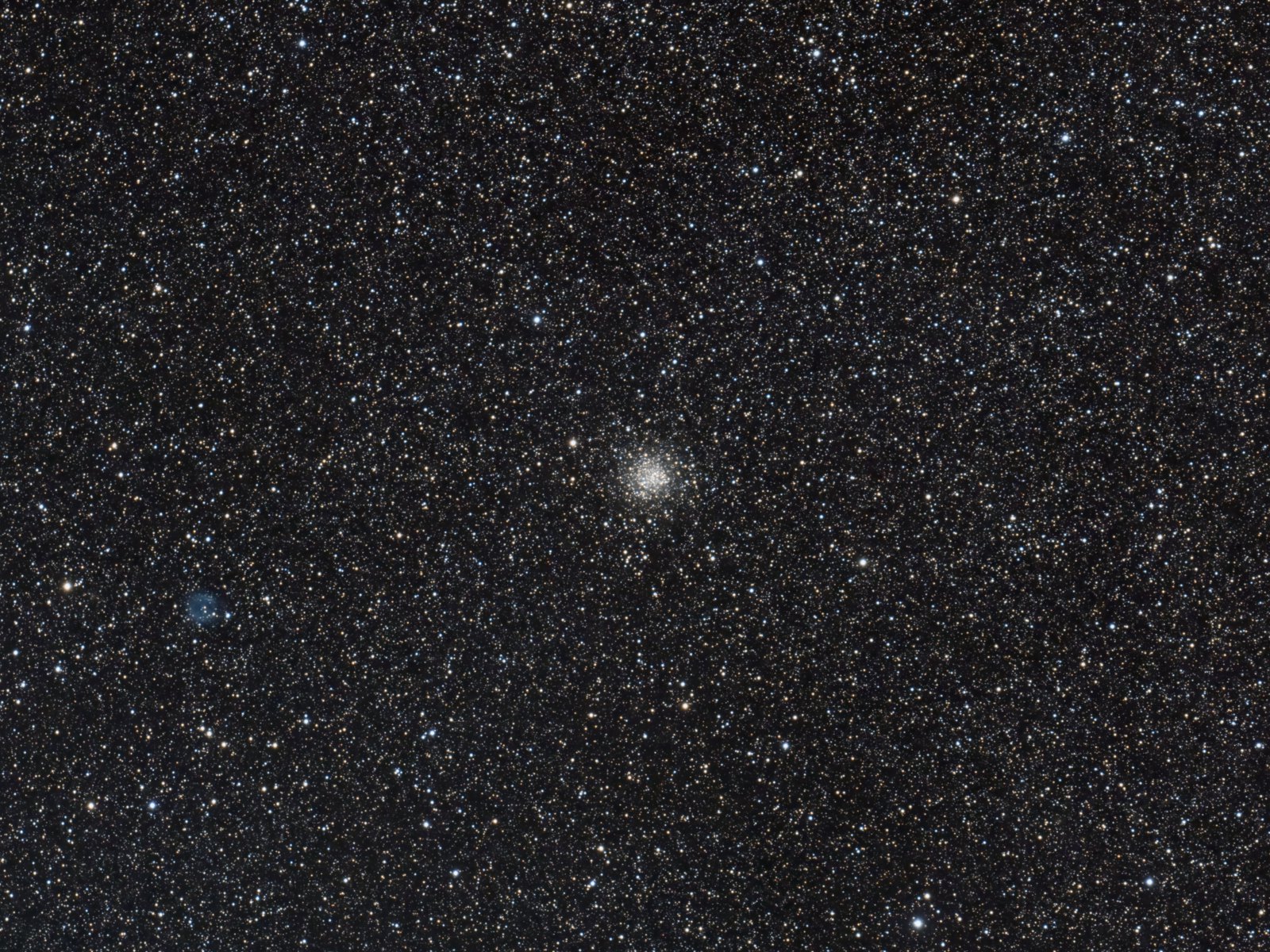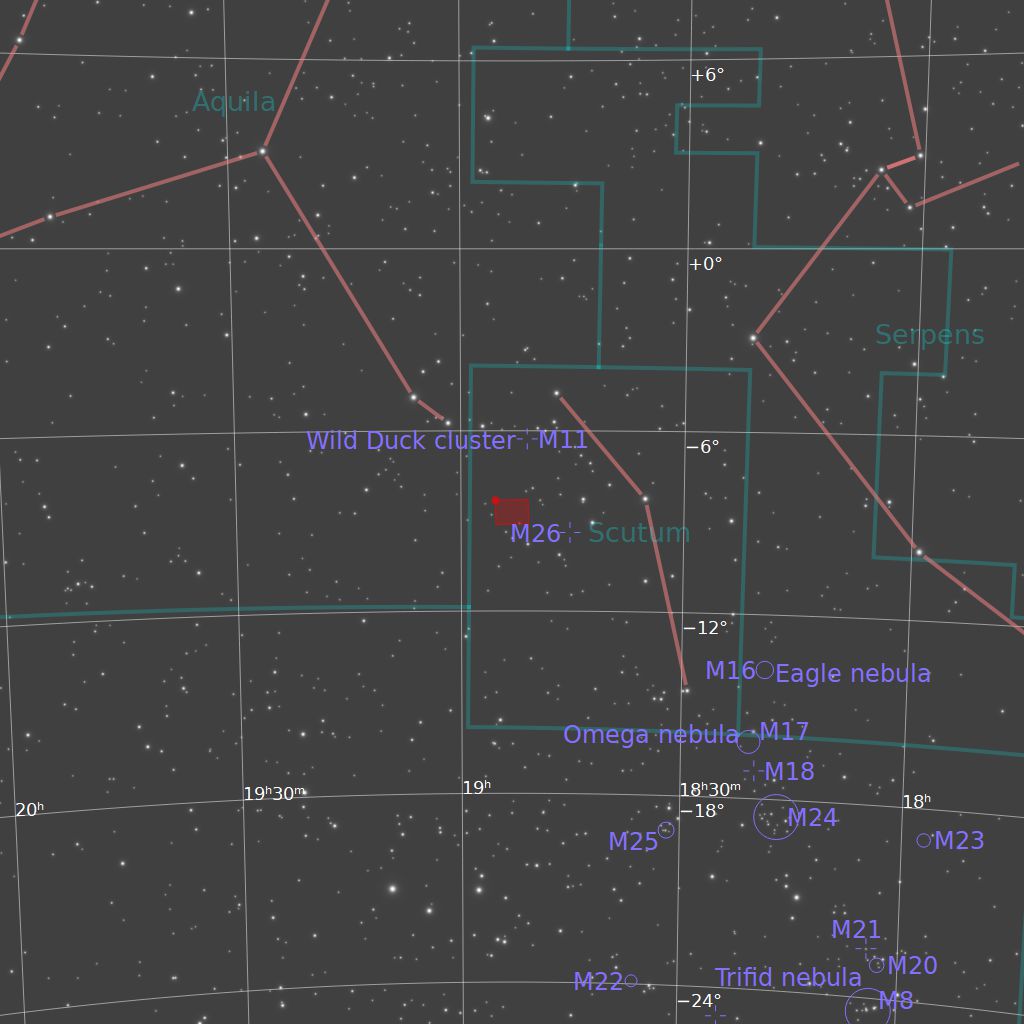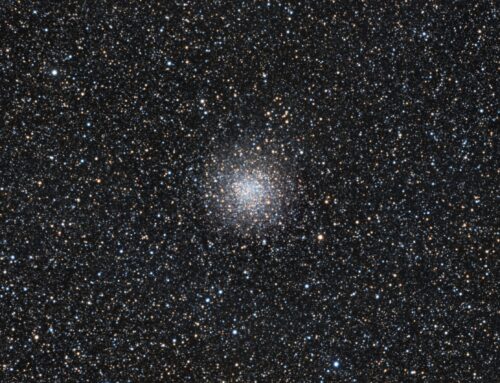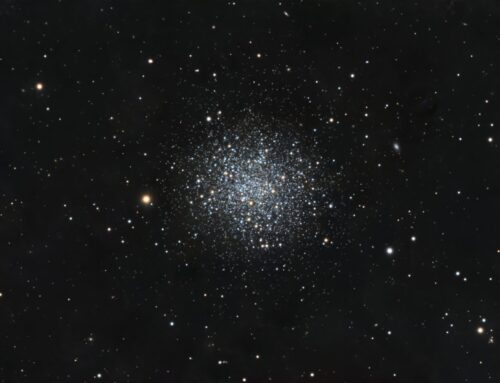NGC 6712 and IC 1295
 Click image for full size version
Click image for full size version
July 9, 2022
I really enjoy globular clusters, both at the eyepiece and in images. I had never looked at or imaged little NGC 6712, in Scutum, so decided to go after it on July 7, 2022. To my surprise, I got a bonus object in the frame, planetary nebula IC 1295, which is glowing with the characteristic teal colour of oxygen atoms. I prepared an annotated image that identifies them. When I first inspected my frames, I thought I had a dust shadow. But it was present on both cameras, so looked into it a little further.
Tekkies:
Acquisition, focusing, and control of Paramount MX mount with N.I.N.A., and TheSkyX. Focus with Optec DirectSync motors and controller. Equipment control with PrimaLuce Labs Eagle 4 Pro computer. All pre-processing and processing in PixInsight. Acquired from my SkyShed in Guelph. Very good transparency and average seeing. Acquired May 24-June 3, 2022 under a moon-free sky.
Sky-Watcher Esprit 150 f/7 refractor and QHY16200A camera with Optolong UV/IR filter
22x5m OSC = 1hr50m
The WeightedBatchPreProcessing script was used to perform calibration, cosmetic correction, weighting, registration, local normalization and integration of all frames.
DrizzleIntegration was applied to the OSC frames, and the result was aligned to the Luminance master with StarAlignment. This yielded aligned Lum and Colour masters.
DynamicBackgroundExtraction was applied to the luminance and OSC masters.
Colour
Colour Calibration: ColorCalibration was used to calibrate the OSC master.
Linear Noise Reduction: NoiseXterminator was used to reduce noise in the background areas with settings Amount=0.9 and Detail=0.15
Stretching: HistogramTransformation was applied to make a pleasing yet bright image.
Luminance
Linear Noise Reduction: NoiseXterminator was used to reduce noise in the background areas with settings Amount=0.9 and Detail=0.25
Stretching: HistogramTransformation was applied to make a pleasing yet bright image.
Combining Luminance and Color Images
Luminance addition: LRGBCombination was applied to replace the lightness of the RGB image with the Luminance master.
Additional Processing
Star Removal: StarNet v2 was used to remove stars.
Nonlinear Noise Reduction: NoiseXterminator was used to reduce noise in the background areas of each image with settings Amount=0.9 and Detail=0.25
Contrast Enhancement: LocalHistogramEqualization was applied using an inverted lightness mask to select the nebula. Three passes were applied (scale 20, max contrast 1.5, strength 0.5, 1 iteration; scale 80, max contrast 1.5, strength 0.25, 1 iteration; and scale 150, max contrast 1.5, strength 0.18).
Star Restoration: Stars removed using StarNet2 above were added back into the image using straight addition in PixelMath.
Final Steps: Background, DSO and star brightness, contrast and saturation were adjusted in several iterations using CurvesTransformation with masks as required. ICCProfileTransformation (sRGB IEC61966-2.1; Relative Colorimetric with black point compensation) was applied prior to saving as a jpg.








amazing!